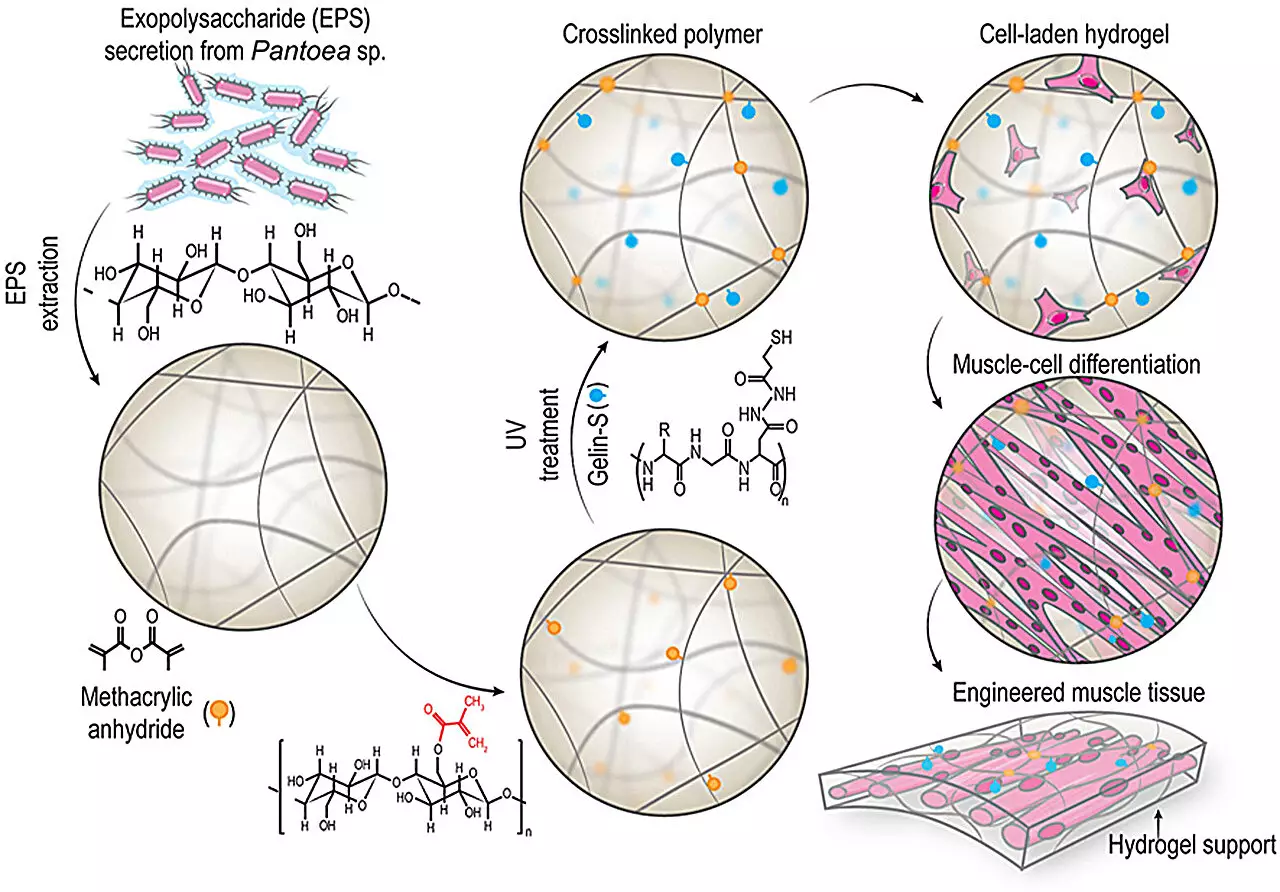Recent advancements in tissue engineering have shifted focus towards unconventional solutions, particularly the integration of bacterial properties into medical applications. A notable study spearheaded by Alireza Dolatshahi-Pirouz and his team at the Technical University of Denmark has highlighted this innovative approach. By leveraging the bioproduction capabilities inherent in certain bacteria, researchers have succeeded in formulating a novel biopolymer called Pantoan Methacrylate (PAMA). This biopolymer is not just a synthetic product; it carries significant tissue-healing properties, offering exciting implications for muscle regeneration therapies.
This new polymer has enabled the creation of a unique hydrogel, termed “bactogel,” specifically designed for muscle tissue regeneration. Unlike previous bioactive hydrogels that often compromise mechanical strength for biocompatibility, PAMA stands out due to its elastic and resilient qualities. In experimental trials with rats, the application of this bactogel yielded remarkable results, signaling a marked increase in muscle tissue formation while simultaneously minimizing the formation of fibrous adhesions. The in vivo results indicate a mechanical recovery rate nearing 100%, thereby establishing PAMA as an exceptional candidate for regenerative medical treatments.
The ramifications of this research extend beyond theoretical applications; they have the potential to transform therapy for various patient demographics. Athletes facing musculoskeletal injuries, elderly individuals experiencing muscle degeneration, and even soldiers or civilians afflicted by traumatic injuries stand to benefit from therapies that utilize PAMA. Associate Professor Dolatshahi-Pirouz articulated the uniqueness of their findings, emphasizing the rarity of simultaneously achieving excellent mechanical properties alongside bioactivity in hydrogels. These insights could lead to significant improvements in recovery outcomes for patients across different activity levels and lifestyle contexts.
The innovative trajectory forecasted by Dolatshahi-Pirouz suggests a paradigm shift in regenerative medicine. By envisioning the use of “bactomers,” or bacterial polymers, the team offers a glimpse into a future where dynamic regenerative processes can be implemented at the site of injury. Imagine a clinical setting where patients are treated with regenerative bacto-baths, allowing for real-time secretion of healing agents by bacteria. This forward-thinking perspective invites intrigue about the integration of stem cells or muscle progenitor cells with the PAMA hydrogel for even greater regenerative outcomes.
As research progresses and clinical applications come to fruition, the promise of bacteria-derived polymers paves the way for innovations in healing methodologies through their biocompatibility and bioregenerative potential. The implications of this research not only highlight the versatility of biological systems in medical treatments but also direct us towards adopting a more integrative approach in medical science, blending biotechnology with traditional therapies. With ongoing studies and potential collaborations, the journey towards fully realizing the capabilities of these “living” materials is only just beginning, and the future of regenerative medicine seems poised for groundbreaking advancements.


Leave a Reply